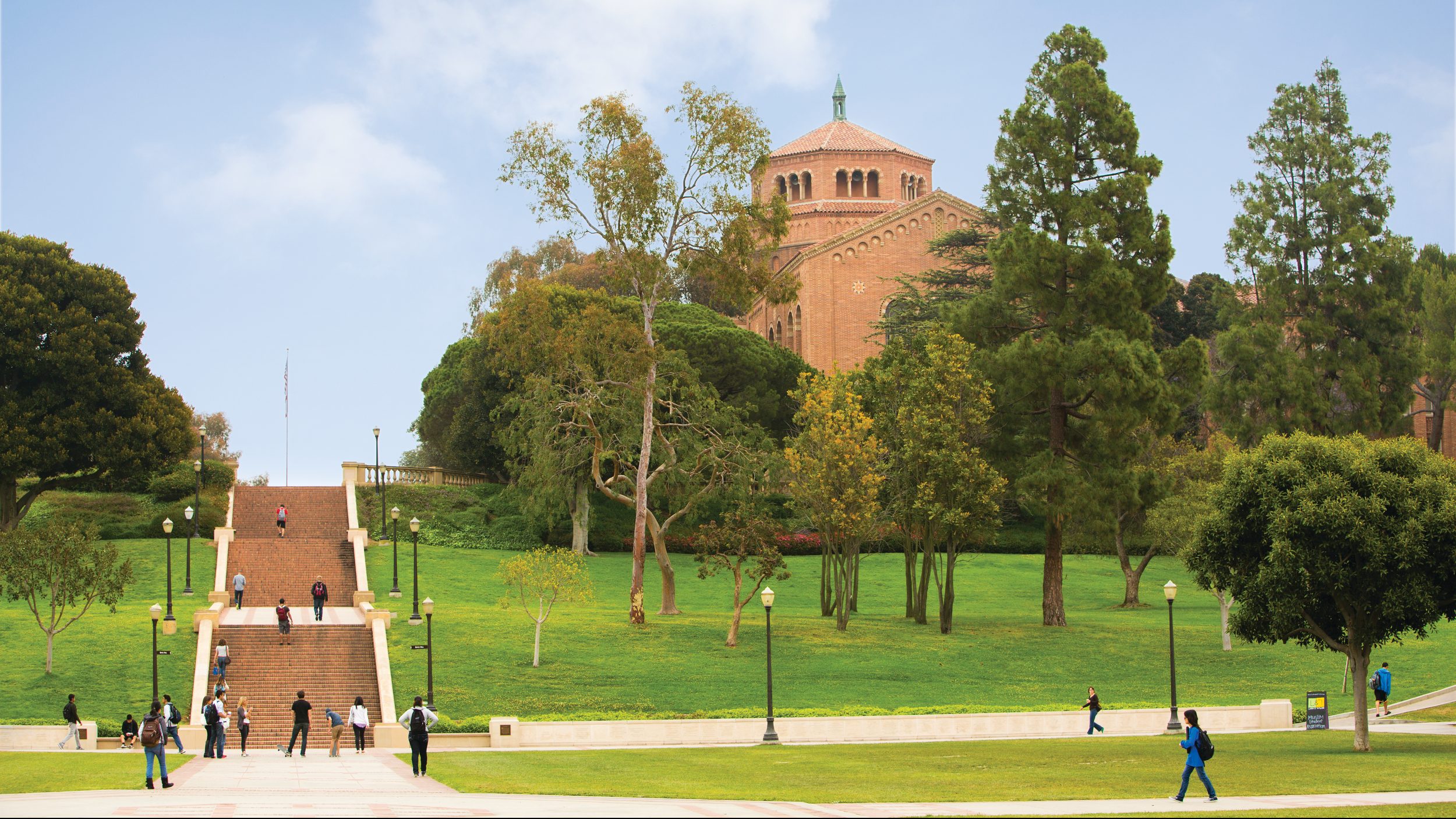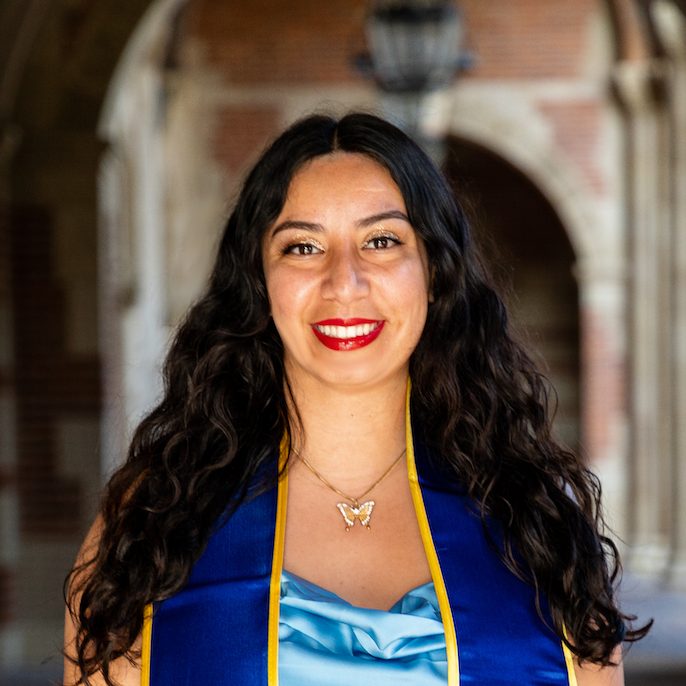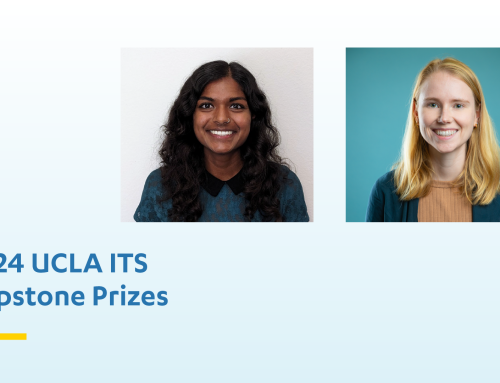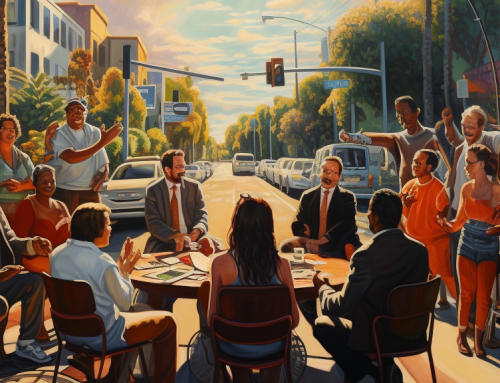To fulfill their degree requirements, urban planning graduate students at the UCLA Luskin School of Public Affairs must either write a thesis paper or complete a project on behalf of real-world clients. Each year, UCLA ITS provides funding for a set of student research projects that provide valuable insights into today’s pressing transportation questions. Additionally, at the completion of their capstone projects, ITS awards students who conduct exceptional research and produce meaningful findings for the transportation field.
This year, nine projects — 18 students total — were recognized for their excellent contributions. We are confident that their research will provide the critical evaluation that their clients need, and will shape how practitioners approach these issues in the future.
Grand prize awards went to Kimberly Venegas, MURP ‘22, who received the ITS Capstone Prize for her project, Take The High (Volume) Road: Analyzing The Safety and Speed Effects of High Traffic Volume Road Diets, and Nataly Rios Gutierrez, MURP ‘22, who received the Excellence in a Transportation Equity & Justice Capstone Prize for her project titled Transportation Challenges to Healthcare: Evaluating the Transportation Needs of Patients at Saban Community Clinic. Both awards included a prize of $5,000.
ITS Capstone Prize: Take the High (Volume) Road | Kimberly Venegas
So-called “road diets” convert urban streets with two lanes of through-traffic in each direction into streets with center left-turn lanes, one lane of through-traffic and, often, a bicycle lane as well. Intuition suggests that losing two through-traffic lanes would increase congestion. But because cars don’t get stuck behind left-turning vehicles, traffic tends to flow more smoothly, and crashes, injuries, and deaths are reduced — a lot.
While road diets have grown increasingly popular around the country, most guidance still holds that they only work on roads with moderate or low levels of traffic. For her capstone project, Venegas studied the safety and travel time impacts of road diets on high-traffic roads by comparing collisions and speeds on corridors with road diets to similar street segments without them.
Venegas found that corridors with road diets had 44% fewer collisions. Furthermore, collisions that resulted in fatal and severe injuries were 200% and 27% lower, respectively. She also found that the safety pay-offs far outweighed the impacts on speed. While observed travel times were indeed longer on road diet corridors, the difference averaged to just 11 seconds per mile.
UCLA ITS director and professor Brian Taylor, who served as Venegas’s faculty advisor, said her findings were impressive.
“She has shaken conventional wisdom about road diets, and in doing so has created many more opportunities to reduce crashes, injuries, and deaths on city streets,” Taylor said.
Transportation Equity & Justice Capstone Prize: Transportation Challenges to Healthcare | Nataly Rios Gutierrez
Delaying or forgoing health care can lead to serious consequences. Each year, millions of people nationwide miss their medical appointments due to inadequate transportation options. For her project, Rios Gutierrez examined the transportation challenges faced by patients of the Saban Community Clinic, which provides health care to predominantly uninsured and underinsured Latino patients at its various Los Angeles sites. Her research included spatial analysis of patient residential locations, patient surveys, and an evaluation of the clinic’s ride-hailing program meant to mitigate some of the transportation barriers.
Rios Gutierrez found that patients who use public transportation, ride-hail, or are driven by someone else are more likely to experience transportation challenges. Unreliable service and lack of money to pay for public transportation, ride-hail, car maintenance, or gas contributed to missed or late appointments.
She also found that while most patients are centrally located close to one of the clinic’s sites, some patients travel upwads of 20 miles for care. The clinic’s Lyft program has become more popular and more expensive in recent months.
Madeline Brozen, deputy director of the Lewis Center for Regional Policy Studies who served as Rios Gutierrez’s advisor, said her capstone project stands apart because of the depth of data collection and analysis and how it frames the consequences of the lack of transportation in people’s lives.
“This work resulted in not only useful information and recommendations about who needs assistance but also an understanding of the promises and perils of relying on services like Lyft/Uber to improve transportation access,” Brozen said.
2022 Capstone Prizes
| Award | Student | Project | Client |
|---|---|---|---|
| 1st Place | Kimberly Venegas | Take The High (Volume) Road: Analyzing The Safety and Speed Effects of High Traffic Volume Road Diets | Los Angeles Department of Transportation |
| Transportation Equity & Justice Prize | Nataly Rios Gutierrez | Assessing Transportation Challenges in Access To Healthcare | Saban Community Clinic |
| 2nd Place | Aziz Fellague Ariouat | Expanding Grocery Access for Community Members at the Century Villages at Cabrillo | Century Villages at Cabrillo |
| 2nd Place | Ryota Abe, Matthew Forbes, Emily Marshall, Marium Navid, Karleigh Shepard | Analyzing the Effects of Zero Emission Delivery Zones | World Resources Institute |
| 3rd Place | Erik Felix | Saved by the… Bus? Analyzing Safety Outcomes on Streets with Bus Lanes | Los Angeles Department of Transportation |
| Honorable Mention | Ryan Caro | SFMTA Equity Tool | San Francisco Municipal Transportation Agency |
| Honorable Mention | Bryan Graveline | A Tale of Two City Streets: Evaluating the Safety, Congestion, and Cut-Through Effects of Road Diets | Los Angeles Department of Transportation |
| Honorable Mention | Elizabeth Owen | Try Transit! Lessons Learned from Metrolink Riders to Incentivize a Post-Pandemic Mode Shift to Commuter Rail | Southern California Regional Rail Authority – Metrolink |
| Honorable Mention | Miranda Mead-Newton, Paul Guirguis, Antara Murshed, Karen, Phan, Ellen Schwartz, Ben Silverstein | Planning Indicators: Non-Auto Mobility | LA Metro Office of Extraordinary Innovation |







